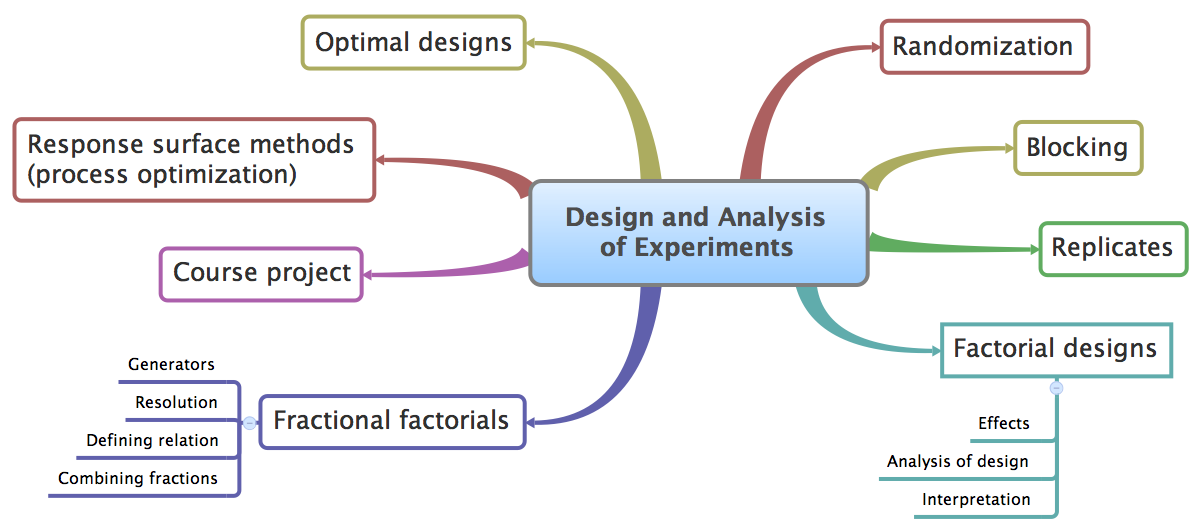5.3. Usage examples¶
After you complete this chapter, you will be able to answer questions such as those presented in these scenarios:
Colleague: We have this list of eight plausible factors that affect the polymer melt index (the outcome). How do we narrow down the list to a more manageable size and rank their effect on melt index?
You: Our initial screening experiments reduced the list down to three factors of interest. Now, how do we perform the rest of the experiments?
Manager: Two years ago someone collected these experimental data for the effectiveness of a new chemical to treat water. What interesting results do you see in this data, and where should we operate the system to achieve water quality that meets the required standards?
Colleague: The current production settings for our food product gives us good shelf life, but the energy used is high. How can we determine other settings (factors) that give long shelf life but reduce the energy consumed?
Colleague: We would like to run experiments by varying temperature and pressure, but operating at both high temperature and pressure is unsafe. How do we plan such an experiment?
Here’s a visual representation of the topics we will cover in this chapter.

5.4. References and readings¶
Strongly recommended: Box, Hunter and Hunter, Statistics for Experimenters, 2nd edition. Chapters 5 and 6 with topics from Chapters 11, 12, 13 and 15 are the most heavily used in this chapter.
Søren Bisgaard: Must a Process Be in Statistical Control Before Conducting Designed Experiments?, with discussion (part 1, part 2, part 3, part 4, part 5 and a rejoinder).
George Box and J. Stuart Hunter, “The \(2^{k-p}\) Fractional Factorial Designs - Part I”, Technometrics, 3, 311-351, 1961.
George Box and J. Stuart Hunter, “The \(2^{k-p}\) Fractional Factorial Designs - Part II”, Technometrics, 3, 449-458, 1961.
George Box, “Evolutionary Operation: A Method for Increasing Industrial Productivity”, Journal of the Royal Statistical Society (Applied Statistics), 6, 81-101, 1957.
William G. Hunter and J. R. Kittrell, “Evolutionary Operation: A Review”, Technometrics, 8, 389-397, 1966.
Heather Tye, “Application of Statistical Design of Experiments Methods in Drug Discovery”, Drug Discovery Today, 9, 485-491, 2004.
R.A. Fisher, Statistical Methods, Experimental Design and Scientific Inference, Oxford Science Publications, 2003.
Raymond H. Myers, Douglas C. Montgomery and Christine M. Anderson-Cook, Response Surface Methodology: Process and Product Optimization Using Designed Experiments, Wiley, 2009.
William Hill and William Hunter, “A Review of Response Surface Methodology: A Literature Survey”, Technometrics, 8, 571-590, 1966.
Owen L. Davies, The Design and Analysis of Industrial Experiments, Chapter 11, revised 2nd edition, Hafner, 1967.